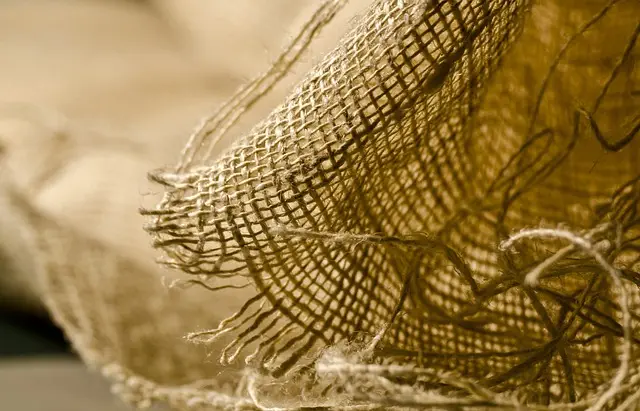Kratom, derived from the Mitragyna speciosa plant, has been utilized traditionally in Southeast Asia for its pain-relieving properties. Its active alkaloids, mitragynine and 7-hydroxymitragynine, interact with opioid receptors to provide analgesic effects that can help with muscle recovery after exercise by reducing pain and inflammation. Additionally, kratom is being explored for its potential in addiction treatment and recovery, offering support for individuals dealing with opioid withdrawal symptoms due to its receptor-like effects. While it holds promise for both managing post-exercise soreness and aiding in the transition from addictive substances, it is essential to approach kratom with caution and seek professional medical advice before use, given its potential for dependency. The responsible use of kratom as a natural alternative for pain management, alongside its recognized role in supporting addiction recovery under medical supervision, should be carefully considered within the context of a comprehensive treatment plan.
Muscle soreness can be a formidable hurdle for anyone, particularly those engaging in rigorous activity or recovering from injury. The natural compound kratom has garnered attention for its potential to alleviate muscle pain and aid in recovery processes. This article delves into the multifaceted benefits of kratom, exploring how it can serve as both a remedy for muscle soreness and a supportive measure in addiction treatment and recovery. We will examine the scientific evidence behind kratom’s efficacy, evaluate different strains for managing muscle discomfort, and discuss its role in holistic wellness regimens. Join us as we navigate the complexities of kratom’s therapeutic properties and its application in alleviating pain, enhancing recovery, and supporting overall health.
- Understanding Muscle Soreness and Kratom's Role in Relief and Recovery
- Exploring Kratom Strains for Muscle Soreness Management
- Kratom as a Complementary Approach for Addiction Treatment and Muscle Soreness Relief
Understanding Muscle Soreness and Kratom's Role in Relief and Recovery

Muscle soreness, often a result of intense physical activity or exercise, can significantly impede an individual’s recovery and progress. It arises when muscle fibers experience micro-tears and inflammation due to overuse or eccentric contractions, leading to discomfort and sometimes hindering one’s ability to engage in subsequent workouts. Understanding the mechanisms behind muscle soreness is crucial for developing effective relief strategies. This is where kratom, a botanical supplement derived from the leaves of Mitragyna speciosa, may play a role. Kratom has been traditionally used in Southeast Asia for its pain-relieving properties, and recent research has begun to elucidate its potential benefits for muscle recovery. Its alkaloids, including mitragynine and 7-hydroxymitragynine, are thought to interact with the body’s opioid receptors, providing analgesic effects that could help alleviate muscle soreness. Additionally, kratom may influence the brain’s perception of pain, offering a dual approach to managing discomfort.
For those recovering from addiction, kratom’s role extends beyond muscular relief to include support in the treatment and recovery process. Kratom for addiction treatment has been a topic of interest among medical professionals due to its potential to alleviate withdrawal symptoms from opioid dependence. It is important for individuals to use kratom under professional guidance, as it can be both beneficial and potentially addictive itself. When used responsibly as part of a comprehensive treatment plan, kratom may offer a natural alternative to manage pain and support recovery from addiction while also aiding in the relief of muscle soreness associated with exercise or injury. As with any supplement, consulting healthcare professionals is essential to ensure safe and effective use.
Exploring Kratom Strains for Muscle Soreness Management

When addressing muscle soreness, individuals often seek natural alternatives to manage discomfort effectively. Kratom, a botanical supplement derived from the leaves of Mitragyna speciosa, has garnered attention for its potential in alleviating muscle pain. Among the diverse strains of kratom, certain varieties are particularly noted for their analgesic properties, which may aid in muscle soreness relief. For instance, the Red Bali Kratom strain is renowned for its soothing effects, potentially offering relief from chronic and acute muscle pain. Users report a sense of calm and relaxation alongside pain reduction. Another strain, Maeng Da Kratom, is celebrated for its balanced alkaloid profile that may provide powerful pain-relieving benefits without the sedative side effects often associated with opioid painkillers.
In addition to its use for muscle soreness, kratom has also been explored as a supplement in addiction treatment and recovery. The mitragynine and 7-hydroxymitragynine alkaloids present in kratom are believed to contribute to its potential as an aid in opioid cessation and withdrawal management due to their similarity to opioid receptor agonists. This dual utility of kratom, both for pain relief and as a support tool in addiction treatment, underscores the importance of responsible use and further research into its applications. As with any supplement, it is crucial to consult healthcare professionals before incorporating kratom into one’s health regimen, particularly when recovering from addiction or managing chronic pain conditions.
Kratom as a Complementary Approach for Addiction Treatment and Muscle Soreness Relief

Kratom, a plant from the coffee family indigenous to Southeast Asia, has garnered attention both for its potential in addiction treatment and recovery, as well as its role in providing muscle soreness relief. In the realm of addiction, kratom is being explored as a complementary approach due to its unique alkaloid composition, particularly mitragynine and 7-hydroxymitragynine. These compounds interact with opioid receptors in the brain, offering analgesic effects that can help manage withdrawal symptoms associated with opiate addiction. The use of kratom in addiction treatment is an area of ongoing research, as it may aid individuals in transitioning away from more potent and dangerous substances. Additionally, its ability to alleviate pain without the high associated with opioids makes it a promising alternative for those seeking recovery.
On another note, athletes and individuals engaging in physically demanding activities often experience muscle soreness, which can impede their performance and daily functioning. Kratom is believed to exert anti-inflammatory properties and act as a natural pain reliever, potentially reducing the severity of muscle soreness. The plant’s traditional use for pain management aligns with some contemporary applications, where it is employed to ease discomfort following intense exercise or injury. It is important to note that while kratom may offer relief from muscle soreness, its role in addiction treatment and recovery should be approached with caution, as the substance itself can be addictive and is subject to regulatory scrutiny due to its potential for abuse. Users considering kratom for either purpose should consult healthcare professionals to ensure safe and effective use within a treatment plan.
Muscle soreness can be a significant hindrance to both athletes and individuals recovering from addiction, impacting their ability to engage in physical activity and maintain sobriety. This article has explored the multifaceted role of kratom supplements in addressing muscle soreness and their potential as a complementary approach in addiction treatment and recovery. By understanding how different kratom strains can be utilized for muscle soreness management, individuals may find effective relief that supports an active and healthy lifestyle. As with any supplement or treatment strategy, it is advisable to consult healthcare professionals when incorporating kratom into one’s wellness plan, ensuring safe and beneficial use. The insights provided here underscore the importance of exploring natural alternatives like kratom for those seeking pain relief from muscle soreness while navigating the challenges of recovery.






